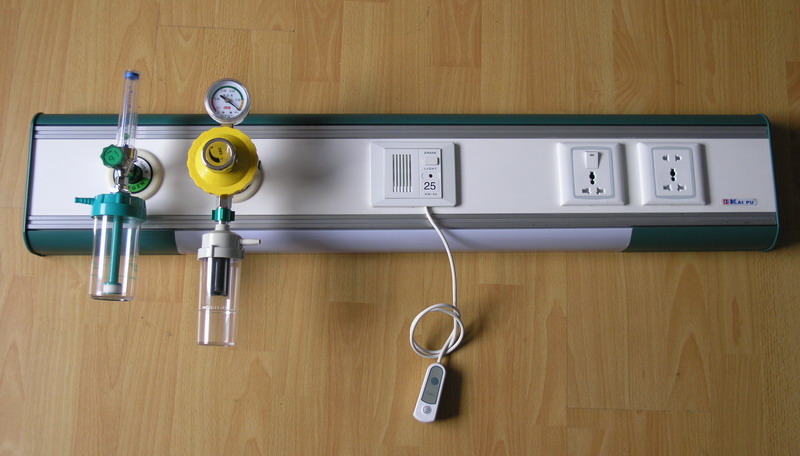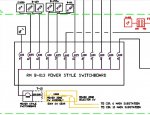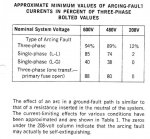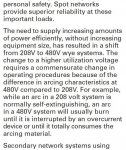Which leads me to ask- after 30 years of not opening, what have you seen fail more: Fused switches like bolted pressures or molded case circuit breakers? What about power circuit breakers?
OK, a little background. I work for the largest motor shop in the Carolinas in their field service group. I have almost every kind of customer you can imagine. We do breaker and switchgear maintenance. I'm the guy that gets called when something seems to be wrong and the local guys can't, or won't, handle it. So for your scenario I either get the service call AFTER someone tried to open the equipment and the breaker/disconnect burned up on them and now they're trying to figure out what to do, or once in a while beforehand when the maintenance guys know enough to suspect what will happen but are looking for someone that can magically make it all better, or at least take the risk of pulling the handle when they aren't willing to do it themselves.
In answering your question, MAYBE a 15 or 20 A MCCB will successfully open but that's about it. In most parts of the country there was a huge capital expansion and the entire electrical distribution system was essentially built for the most part in the 1960's and 1970's so it's all about 50 years old. Some newer parts exist to be sure but a lot of it is that old. So I see this kind of stuff pretty frequently, but even the 1980's and 1990's stuff is in pretty rough shape these days.
First we're not talking about tripping here, just opening. If we're talking tripping I feel pretty good about the fuses. It's an electro-chemical reaction of sand and metal or borax, none of which are particularly reactive or "go bad" over time. Fuse clips yes, fuse bodies, fuse caps, and other metal parts, sure. But fuses themselves, it's pretty rare that they actually fail to work. Trip mechanisms in breakers on the other hand...good luck with that.
The problem is that with every one of those mechanisms you are going to have corrosion, fretting, and other things that essentially weld or glue the contact tips together. That's the minor problem. The bigger problem is that except for very small breakers and disconnects they all use some kind of greased bearing. The whole idea is that the grease separates the metal surfaces of the bearing and prevents metal-on-metal contact. The whole idea is that the grease is just a very thick oil that moves very slowly on it's own, so it takes a long time to push all the grease out of the joint. But after 30 years, the grease long was long since pushed out of the joint either by spring pressure or gravity. A second problem is that the vast majority of breakers are lubricated with Mobil 28 or something even older. This is a PAO oil with a clay thickener. The clay is fine but the PAO oil long, long since evaporated completely out after 30 years. So even if we can overcome metal-on-metal contact the grease that is in the rest of the bearing is basically a hard ball of clay bound together with a small amount of wax. This stuff gets so hard it takes a hammer and chisel to remove it.
So let's talk about what really happens in this situation. Because I've experienced it first hand multiple times. First off it is best if at all possible to shut the power off. Now get a really good grip on the handle and pull as hard as you can on that disconnect or MCCB. It is HIGHLY LIKELY that the handle is going to break off. If it opens at all the bearings are likely to break out of their housings. MCCB's often just split in half and disintegrate. Hopefully the contact tips don't stick together and shear right off. If you do it under power, LOOK OUT because it will arc, and it will destroy itself. Now with the ICCB's and the power breakers because those use springs or some other source of power other than my arm, they usually don't make it this far. They either open very slowly, destroying themselves in the process if they are under power, or they are just seized up and never move.
Homeowners frequently never experience this in their houses mostly because very small MCCB's will just use brass bushings or in older equipment jeweled bushings for movements. MCCB's are sealed for life so as long as the pressure isn't too high bushings are the preferred bearing mechanism because there is no grease or oil to worry about. However eventually the size gets large enough where this is no longer effective. Data in old IEEE 493 surveys shows that failure rates on 600 A and larger frame MCCB's are 3 times higher. Failure rates on MCCB's are an order of magnitude higher compared to disconnects but in this particular scenario we are only considering the opening mechanism so the reasons for this difference don't matter.
There are things that can be done to improve this. Fluorosilicone breaker grease (Molykote 3451) essentially doesn't dry out. It won't prevent metal-on-metal contact if the breaker is never exercised but it solves part of the issue of lack of maintenance. Also switching to magnetic actuators which is a newer design can reduce the number of moving parts down to a single part that runs on sliding (bushing) bearings. But by way of example S&C makes a fused disconnect where the disconnect is a vacuum interrupter that is mounted in a stainless steel box. The box is filled with SF6 and then plug welded shut. The disconnect operates via stainless steel bellows that go through the box seals. Similarly I believe Siemens makes GIS switchgear where the breakers themselves are again vacuum interrupters in a pressurized SF6 container along with the disconnect. The mechanism itself is all out in the front. The recommended maintenance procedure is to do breaker testing every 10 years (testing the vacuum integrity, etc.), then do some sort of mechanical PM (greasing or replacing parts) at the 20 year mark, finally scheduling the whole thing for replacement at 40 years. This stuff is obviously VERY expensive. BUT even with the top of the line equipment that goes into special military and utility critical systems, they still have to do maintenance on it 3 times in it's entire 40 year life. And that's infinitely more maintenance than running it for 30 years and then attempting to open it.
So the simple answer is that even considering the best of the best of the best equipment that's out there, where even basic PM's are extremely difficult or impossible to perform because of the inherent cost or danger, it still requires something more than 30 years of total neglect.







